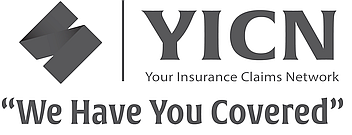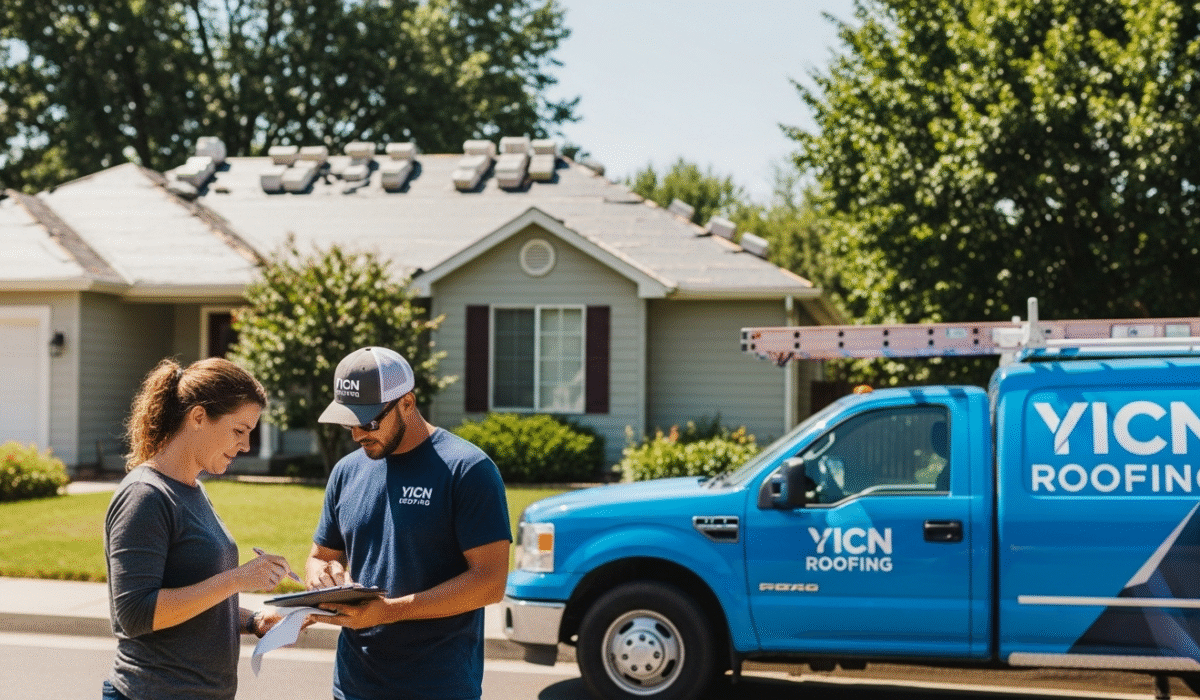- By Kevin Stone
- Roofing
- 0 Comment
Will Insurance Repair or Replace Roof: What Every Homeowner Needs to Know
Whether your homeowners insurance will repair or replace your roof depends on the cause and extent of the damage, your roof’s age, and your policy type. Insurance typically covers sudden events like hail, wind, or falling trees, not gradual wear and tear. Minor damage (like missing shingles) may be repaired, while extensive damage compromising the roof’s structure may require complete replacement. Always check your policy and have an adjuster inspect the damage to determine what’s covered.
Insurance may repair or replace your roof depending on several key factors:
- Cause of Damage: Covered if sudden (e.g., hail, wind, fire); not covered if due to wear and tear.
- Extent of Damage: Minor damage may warrant repairs; extensive damage often leads to complete replacement.
- Age of Roof: Older roofs (typically 20+ years) may have limited coverage or qualify for replacement.
- Policy Type:
- ACV (Actual Cash Value): Covers the depreciated value.
- RCV (Replacement Cost Value): Covers the full replacement cost.
Cosmetic damage may not be covered. Always check your policy details and consult your insurance provider.
Will Insurance Repair or Replace the Roof?
If your roof has been damaged and you’re wondering whether insurance will cover repairs or replacement, you’re in the right spot. I’ve been helping folks in Cleveland, Parma, Euclid, Akron, and surrounding areas navigate this exact situation for years. Let me break down what happens when you file a roof claim and what determines whether your insurance company will pay for repairs or a complete replacement.
What Determines if Insurance Will Repair or Replace Your Roof?
Your homeowners insurance doesn’t just flip a coin when deciding between repair and replacement. There’s a pretty straightforward process they follow, though it can feel confusing when dealing with roof damage for the first time.
The Cause of Damage Matters Most
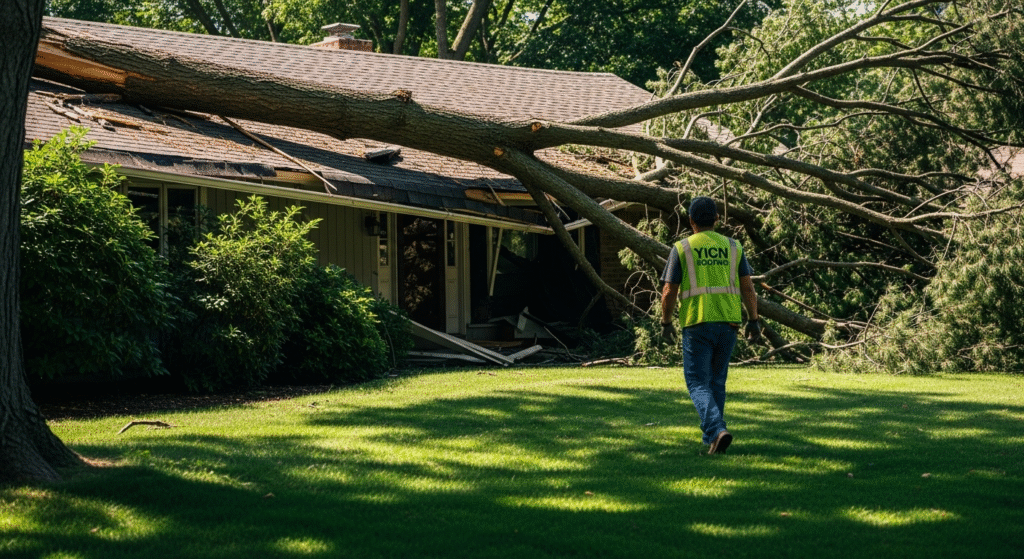
Insurance companies are pretty picky about what they cover. They love covering sudden damage from storms, hail, wind, or falling trees. What they dislike is paying for things that develop gradually over time.
Here’s what typically gets covered:
- Wind damage from storms
- Hail damage to the shingles and roof structure
- Fire damage from lightning strikes
- Damage from falling trees or debris
- Vandalism (though rare of roofs)
How Much Damage Do You Have?
The extent of damage is crucial in determining whether to repair or replace. Insurance adjusters look at several things when inspecting your roof:
Minor damage usually means repairs are:
- A few missing or damaged shingles
- Small leaks in one area
- Damaged flashing around chimneys or vents
- Isolated impact damage
Significant damage that triggers Roof replacement includes:
- Large missing shingles areas
- Multiple leaks throughout the house
- Damaged roof decking or underlayment
- Structural damage to trusses or rafters
Your Roof's Age Makes a Big Difference
Insurance companies consider your roof’s age when making decisions. A 5-year-old roof with storm damage is being replaced, no questions asked. But a 20-year-old roof? That’s where you might run into problems.
Most insurers in Ohio will still cover roof replacement for roofs up to 20 years old, but some start getting picky around 15 years old. After 20 years, many companies switch to actual cash value payouts instead of replacement cost, which factors in depreciation.
Here in Cleveland, I’ve seen insurance companies approve replacements on roofs that were 25+ years old when the damage was clearly from a covered peril like hail. But I’ve also seen them push back on 12-year-old roofs if the damage was minimal.
Your Policy Type Changes Everything
Most homeowners don’t realise there are two main types of homeowners’ insurance coverage for roof replacement:
Replacement Cost Value (RCV) policies are what you want. These funds are used to replace your damaged roof with upgraded materials of similar quality. No depreciation is factored in. If your roof costs $15,000 to replace, you get $15,000 (minus your deductible).
Actual Cash Value (ACV) policies are cheaper upfront, but can leave you short when filing a claim. These factors in depreciation mean that the same $15,000 roof might only get you $8,000 if it’s 15 years old.
The Insurance Claim Process for Roof Damage
Let me walk you through what happens when you file a roof insurance claim:
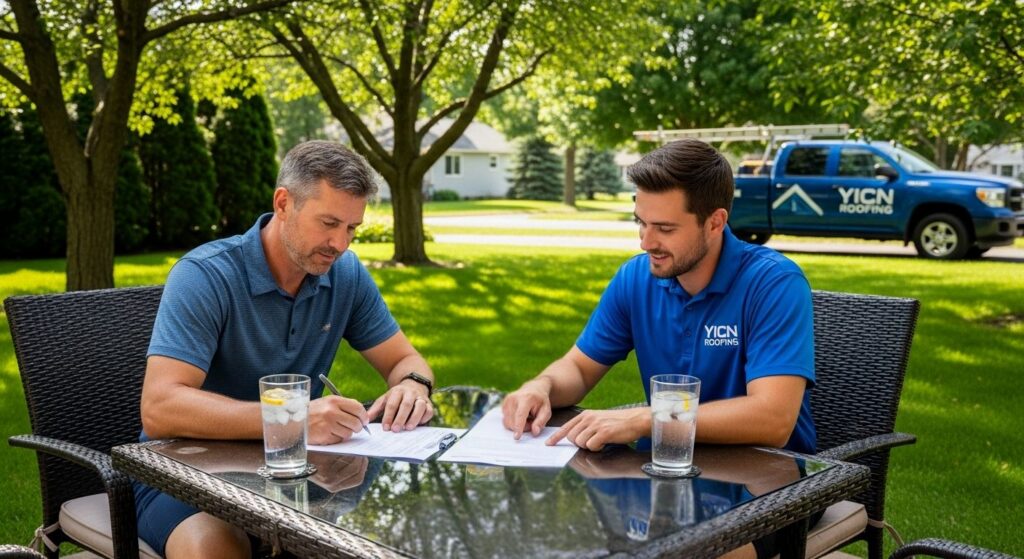
Step 1: Document Everything
Take photos of the damage from multiple angles. Get pictures of your interior if water damage exists. Document the storm that caused it – save weather reports, news articles, whatever you can find.
Step 2: Call Your Insurance Company
You should report the claim as soon as possible. Most companies have 24/7 claim reporting. They’ll assign you a claim number and schedule an adjuster inspection.
Step 3: Get Your Inspection
Before the insurance adjuster arrives, have a local roofing contractor inspect your roof. This gives you ammunition if the adjuster misses anything. Plus, skilled contractors know what to look for and can spot damage that isn’t obvious.
Step 4: Meet the Adjuster
Be there when the adjuster inspects your property. Ask questions. Point out any damage you’ve noticed. If your contractor finds any issues, please bring them up.
Step 5: Review the Settlement
If your claim is approved, you’ll receive a settlement offer. Don’t just accept the first number – review it carefully with your contractor. If something seems off, you can ask for a re-inspection.
Common Reasons Insurance Claims Get Denied
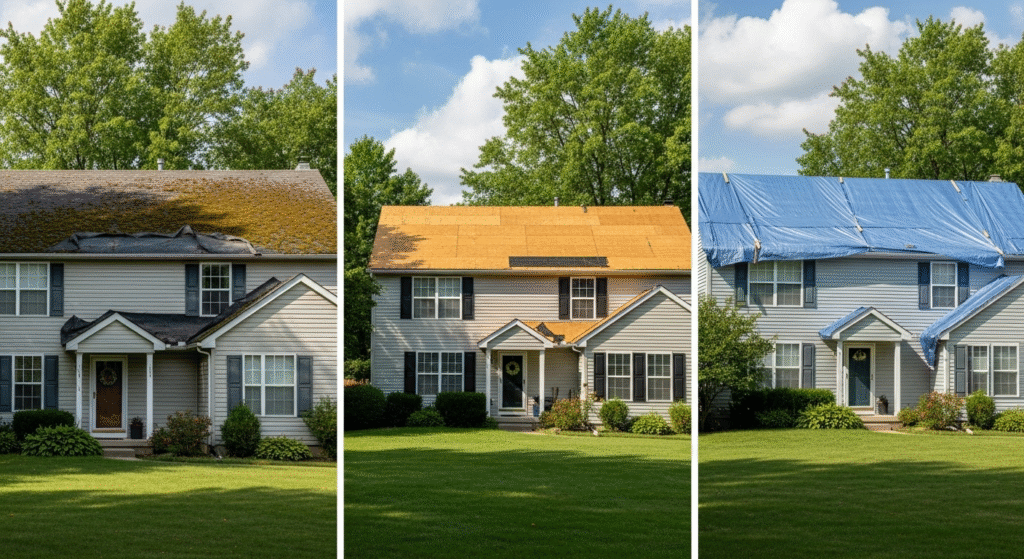
I hate to deliver bad news to homeowners, but roof insurance claims are denied sometimes. Here are the most common reasons.
Maintenance Issues: Insurance companies expect you to maintain your roof. If they find rotted decking or previous leak damage that wasn’t addressed, they might deny the whole claim.
Pre-existing Damage: If the adjuster determined the damage existed before the covered event, you’re out of luck.
Incorrect filing: Filing too late or providing incomplete information can lead to denial.
Policy Exclusions: Insurance policies exclude certain types of damage or have cosmetic damage clauses that limit coverage.
How to Maximise Your Chances of Approval
After dealing with hundreds of insurance claims in northeast Ohio, here’s what works:
Keep detailed maintenance records. Save receipts for roof work, gutter cleaning, or inspections you’ve done. This proves you’ve taken care of your property.
Work with an experienced contractor. Find a roofing company that understands insurance claims. They can help document damage properly and provide detailed estimates that match what adjusters expect to see.
Don’t wait to file. Most policies require you to report the damage within a reasonable time frame. I’ve seen claims denied because homeowners waited months to file a claim for apparent damage.
Local Considerations in Northeast Ohio
Living here in Cleveland and the surrounding areas, we deal with some unique challenges regarding roofing insurance claims:
Ice dams are a significant issue in Parma and Euclid during harsh winters. These can cause considerable water damage, but insurance companies sometimes argue it’s a maintenance issue if your attic isn’t adequately insulated.
Wind damage from lake-effect storms is common throughout Cuyahoga County. These storms can be unpredictable and cause damage patterns that adjusters might not expect.
Hailstorms hit Akron, Canton, and Mentor hard during summer. Contact Us for your clear-cut for insurance purposes.
What Happens After Your Claim is Approved
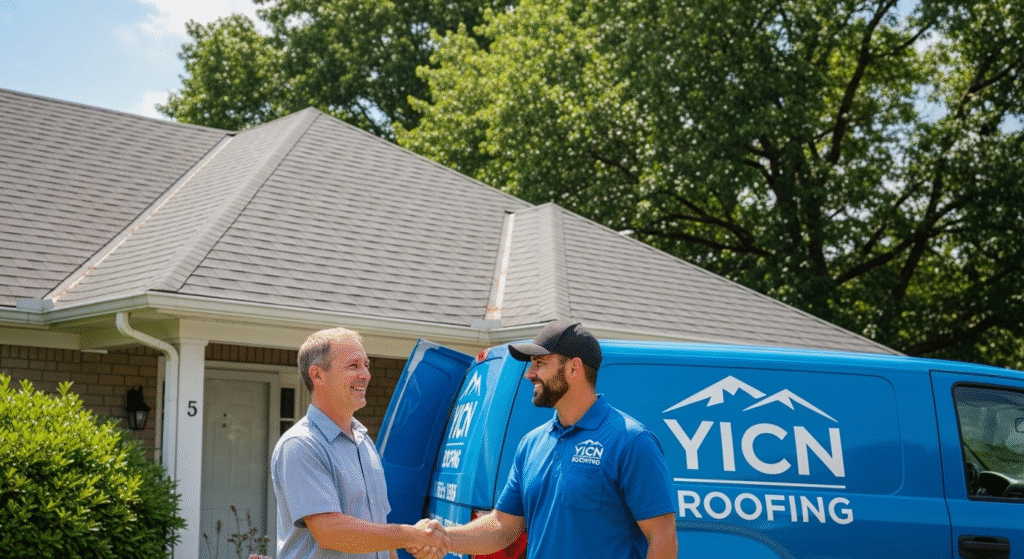
Once your claim gets approved, you’ll typically receive two payments. The first covers your contractor’s initial costs and your deductible. The second comes after the work is completed.
Don’t feel rushed to pick the cheapest contractor. Your insurance company might recommend certain companies, but you’re not required to use them. Pick someone local who knows Ohio’s building codes and weather challenges.
Make sure your contractor uses materials that match your policy requirements.
